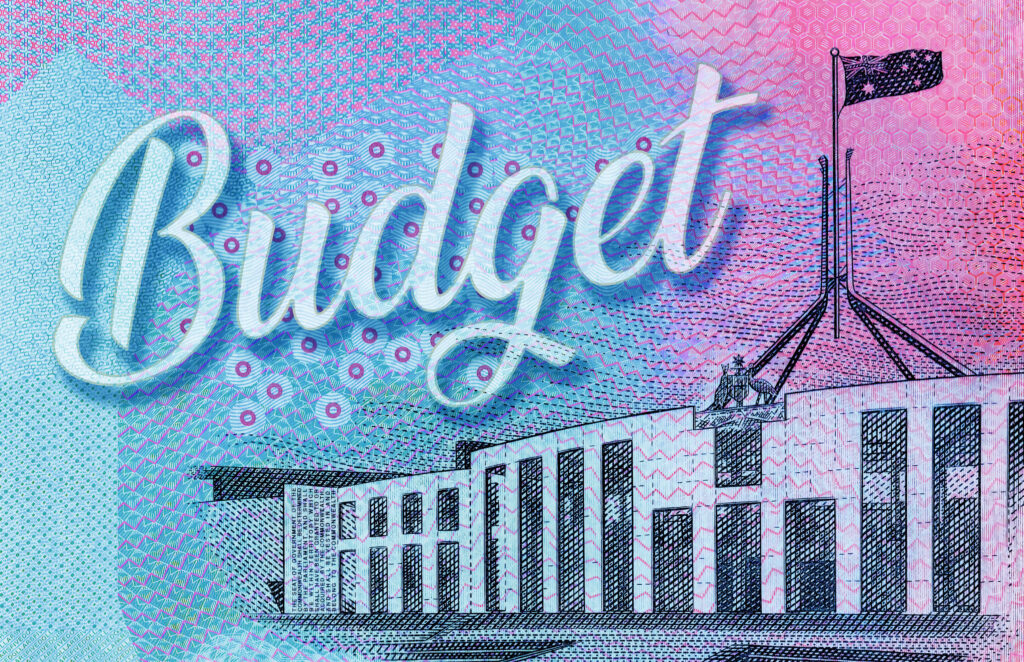Wars in Europe and the Middle East, volatile oil prices and shifting US policies are making headlines but failing to dampen the optimism of the markets.
The ASX closed the financial year with a near 10% return – its strongest since the COVID-19 crisis and despite US tariff threats.
Australia is somewhat insulated from the tariffs, but concern lingers that the federal government’s $1.5 trillion invested in the US, faces a tax hike.
The tariffs are a bigger risk for the US economy, with inflationary risks from tariffs possibly prompting rate increases. Nonetheless, Wall Street remains upbeat. The S&P 500 index surged to a four-month high in June on hopes of further rate cuts and smooth trade negotiations.
In Australia, forecasts of further interest rate cuts have fractured since tensions flared in the Middle East, with some expecting a July cut and others now tipping August.
The Aussie dollar has climbed to a seven-month high, while the US dollar tumbled to a three-year low.
Oil prices posted their sharpest weekly declines after a spike during June as the Middle East conflict reached boiling point.

Market movements and review video – July 2025
Stay up to date with what’s happened in the Australian economy and markets over the past month.
Wars in Europe and the Middle East, volatile oil prices and shifting US policies are making headlines – but failing to dampen market optimism.
The ASX closed the financial year with a near 10% return – its strongest since the COVID-19 crisis and despite US tariff threats.
Despite tariff risks for the US economy, the S&P 500 index surged to a four-month high on hopes of future rate cuts and smooth trade negotiations.
Click the video below to view our update.
Please get in touch if you’d like assistance with your personal financial situation.

How to bucket your money and save
What is bucketing your money?
Bucketing is a smart way to manage your money without complicated budgets or spreadsheets. You set up multiple bank accounts called ‘buckets’ and use each one for a specific purpose, like bills, savings or entertainment. Once your buckets are set up, it’s easier to see and control how you spend and save your money. This strategy is beneficial for anyone looking to save, reduce debt, control spending or achieve bigger financial goals. Bucketing can also help you save your money for larger but infrequent bills like car registration, school fees and energy bills.
Get started with bucketing your money
It’s easy to start bucketing and saving when you know the exact steps involved in the process.
Step 1. Work out your spending and group into categories
A good starting point is working out how you spend your money. An online expense tracker like the Spending tool, for instance, is excellent to help you see where your income goes. Next, group each category of your spending into a few themes. This could look like regular and daily expenses, emergency funds, splurge and savings. Then add up the amounts in each theme. These themes become your buckets. You can have as many buckets as you like, but here’s an example of how to group them:
Bucket 1 – Regular and daily expenses
This is for regular bills, rent, mortgage, debts, groceries, transport, school fees, insurances and holidays. This account should be linked to a debit card.
Bucket 2 – Spending or splurge money
Use this bucket for fun money to splurge on things like socialising or treating yourself and others. This account should be linked to a debit card. You can use card controls to take control of your spending.
Bucket 3 – Emergencies and safety money
This one is for the big or unexpected expenses that can catch you off guard, like home or car repairs, dental work or paying off debts. This account should earn interest and have no debit card, so you’re not tempted to spend.
Bucket 4 – Savings
Use the savings bucket to put aside money for things like travel, a new car or reducing debt. Ideally this should be an account that earns interest and has no debit card.
Step 2. Open your bucket bank accounts
To implement this financial strategy, you’ll need to get started with a basic transaction account with your bank. After you’ve opened one account, it’s easy to open or add extra savings or transaction accounts.
Learn how to open a bank account online.
Handy hints for setting up your buckets
Rename your accounts
When you open your accounts, you can name each account to match its purpose. For example, you could name them ‘Spending bucket’, ‘Fun bucket’, ‘Safety bucket’ and ‘Savings bucket’.
Step 3. Decide on your bucket amounts
This is a very important part of bucketing. The idea is money from your income ‘pours’ into each bucket in certain amounts that you decide. Ideally, all your income or wages should go into the first account, and from there you transfer money into each of your buckets.
As a guide, consider these percentages of your income for each account or bucket:
-
Account 1 – Regular and daily expenses: 60%
-
Account 2 – Spending money: 10%
-
Account 3 – Emergencies and safety money: 10%
-
Account 4 – Savings: 20%
Step 4. Set up regular deposits to your buckets
Now that you’ve worked out how much money goes into each of your accounts, you can automate transfers from your first account into the others. It’s a good idea to set up the transfers so they occur on the same day every month, soon after you get paid. This will help you avoid overspending on pay day.
Now you’re ready to start enjoying the benefits of bucketing.
Source: NAB
Reproduced with permission of National Australia Bank (‘NAB’). This article was originally published at https://www.nab.com.au/personal/life-moments/manage-money/budget-saving/money-bucket
National Australia Bank Limited. ABN 12 004 044 937 AFSL and Australian Credit Licence 230686. The information contained in this article is intended to be of a general nature only. Any advice contained in this article has been prepared without taking into account your objectives, financial situation or needs. Before acting on any advice on this website, NAB recommends that you consider whether it is appropriate for your circumstances.
© 2025 National Australia Bank Limited (“NAB”). All rights reserved.
Important:
Any information provided by the author detailed above is separate and external to our business and our Licensee. Neither our business nor our Licensee takes any responsibility for any action or any service provided by the author. Any links have been provided with permission for information purposes only and will take you to external websites, which are not connected to our company in any way. Note: Our company does not endorse and is not responsible for the accuracy of the contents/information contained within the linked site(s) accessible from this page.

Your future just got a super boost – are you ready?
With the new financial year comes a fresh wave of superannuation changes that could make a real difference to your retirement savings.
Let’s unpack what’s changing – and how to make the most of it.
The SG rate hits 12%
One obvious lift to retirement incomes is the increase in the Super Guarantee (SG) rate from 11.5 per cent to 12 per cent. That means more going into your super account.
Your employer must now pay 12 per cent of your ordinary time earnings into your chosen super account. So, it’s a good idea to check your first payslips for the new financial year to make sure the changed rate is applied.
If you have a salary sacrifice arrangement, note that the SG calculation applies to your total salary, as if the arrangement was not in place.
For a quick update on what the change will look like for your super balance, check the MoneySmart calculator.
More for retirement phase
Beyond your regular contributions, the amount of super that can be transferred into the retirement phase – known as the general transfer balance cap (TBC) – has increased from $1.9 million to $2 million from 1 July 2025.i
If you exceed the cap, you’ll need to transfer the excess back to your accumulation account or withdraw it as a lump sum – plus, you may pay tax on the earnings.
If you’ve already started a retirement income stream, you’ll have a personal TBC – your own individual limit, which may be less than the general TBC. Your personal cap is based on the general cap at that time you started, adjusted for how much you’ve used and any indexation you’re entitled to.ii
For example, if you started a pension with $2 million on 1 July 2025, you’ve used your entire cap. The cap doesn’t limit the amount you can hold in super. If you have more than the cap available, the remainder can be left in your super fund’s accumulation account.
You can check your cap in ATO online services, which records all the debits and credits that make up your balance.
Special rules apply for defined benefit income streams.
More qualify for after-tax contributions
The change in the general TBC to $2 million may also allow you to increase non-concessional (after-tax) contributions using the bring-forward rule. While the $120,000 annual limit on non-concessional contributions hasn’t changed, eligibility for using the bring-forward rule now applies to those with a total superannuation balance below the general TBC of up to $2 million.
The rule allows you to bring forward the equivalent of one or two years of your annual non-concessional contributions cap ($120,000), allowing you to make contributions two or three times more than the annual cap.
No change to contribution caps
While more investors may now be eligible to access the bring-forward rule, the caps on both concessional (before tax) and non-concessional contributions haven’t changed.
The tax paid on contributions depends on whether you’re paying from before-tax or after-tax incomes, you exceed the contribution caps, or you’re a high income earner.iii
The concessional contributions cap is $30,000 and if you have unused cap amounts from previous years, you may be able to carry them forward to increase your contribution in later years. You can make up to $120,000 in non-concessional contributions each financial year and you may be eligible for the bring-forward rule allowing up to $360,000 in one contribution.
Not sure how the rules affect you? Talk to us today about how to stay ahead and make the most of your retirement savings plan.
Awaiting the new $3m tax
The proposed new tax on earnings above $3 million in super accounts, known as the Division 296 tax, has not yet been ratified by Parliament. Nonetheless, it is expected to be applied from 1 July 2025.
The new tax doubles the tax rate from 15 per cent to 30 per cent for earnings on balances that exceed $3 million.
An earnings loss in a financial year, can be carried forward to reduce the tax liability in future years.




